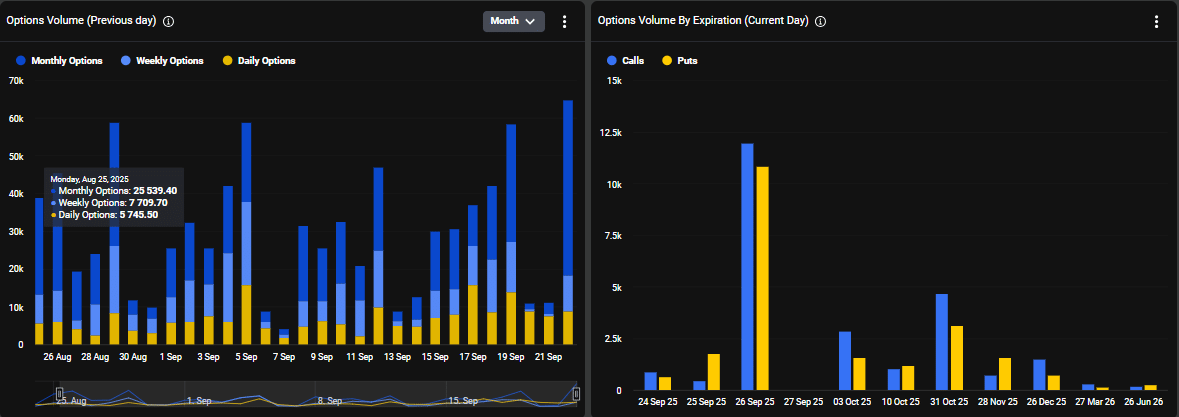The crypto market crash was driven by massive leveraged liquidations, falling trading volume, institutional ETF outflows and major options expiries, causing a drop below $4T. Immediate sell pressure hit BTC and ETH hardest, while high leverage raises risk of further short-term downside.
-
Mass liquidations and volume decline triggered sharp losses.
-
ETF issuers and options expiry compounded sell-side pressure.
-
BTC and ETH led outflows; 23 Sept cap fell to $3.91T.
Meta description: Crypto market crash: causes and next steps — liquidations, ETF outflows, and options expiry drove the dip. Read analysis and takeaways now.
What caused the crypto market crash on September 23?
The crypto market crash on September 23 was caused by concentrated liquidations of leveraged longs, a steep drop in trading volume, institutional ETF sell-offs and a large options expiry that amplified stop losses and sell pressure across major tokens.
How large were liquidations and where did they occur?
On September 23, total liquidations exceeded $1.7 billion, the largest session so far this year. Long positions accounted for roughly $1.65B and shorts for about $145M. Major derivatives platforms impacted included Bybit, Binance and OKX, with Bybit seeing nearly $1B in affected valuation according to market-data trackers (CoinGlass referenced as source, plain text).
The single-largest liquidation cluster hit Ethereum, at about $497 million. Bitcoin experienced concentrated clusters around $111.5K (longs) and $113.8K (shorts), which act as price magnets. Solana recorded nearly $100M in wiped capital during the same period.

Daily market trading volume fell by more than 12.93%, with aggregate market volume near $294M and Bitcoin-specific volume at roughly $55B, reflecting reduced liquidity that magnified price moves.
Why did options expiry and ETFs worsen the sell-off?
Large options expiries triggered mechanical selling and stop-loss cascades. Bitcoin had roughly $265M in call options and $155M in put options expiring, while Ethereum saw about $67M of expiries — nearly half a billion dollars of notional exposure reaching settlement, exerting immediate market pressure.
Concurrently, institutional Bitcoin ETFs recorded net outflows exceeding $363M, signaling capital rotation out of crypto products. Reports (Whale Insider referenced as source, plain text) noted Fidelity sold 7,454 ETH (~$31.2M), contributing to ETH selling pressure.

Which tokens were most affected?
Bitcoin and Ethereum led headline losses due to concentrated liquidations and ETF flows. Solana and other high-leverage altcoins saw outsized percentage declines as derivative positions unwound. Exchange-level liquidation data shows the largest impacts on Bybit, Binance and OKX.
What could happen next for markets?
The market may undergo further near-term volatility as leverage unwinds, but historical patterns suggest resets like this can precede broader rallies. Traders should watch liquidity, open interest and ETF flow indicators for early signs of stabilization.
Quick comparative summary
| Metric | Value (23 Sep) | Impact |
|---|---|---|
| Total market cap | $3.91T | Down from >$4T; bearish sentiment |
| Liquidations | $1.7B+ | Major longs closed |
| BTC ETF outflows | $363M+ | Institutional capital exited |
| Market volume change | -12.93% | Reduced liquidity |
Frequently Asked Questions
How did leverage amplify the crypto crash?
High leverage concentrated risk: when prices moved, forced liquidations cascaded through order books, amplifying downward momentum. Over-leveraged longs were the primary casualties on September 23, accelerating the decline.
Are ETF outflows a sign of long-term weakness?
ETF outflows indicate short-term capital rotation and can worsen immediate price action, but they do not alone determine long-term trends. Monitor inflows/outflows alongside on-chain activity and macro liquidity for a fuller view.
What risk management steps should traders take now?
Reduce leverage, set clear stop levels, diversify exposure, and monitor open interest and ETF flow data. Consider dollar-cost averaging or defensive position sizing until liquidity normalizes.
Key Takeaways
- Primary drivers: Liquidations, options expiry and ETF outflows created concentrated sell pressure.
- Market condition: Cap fell to $3.91T with volume down ~13%, increasing short-term volatility.
- Actionable insight: Watch leverage metrics, ETF flows and open interest for stabilization signals; manage risk with lower leverage.
Conclusion
The crypto market crash on September 23 was the result of intertwined forces: massive leveraged liquidations, declining volume, large options expiries and institutional ETF outflows. Crypto traders should prioritize risk management and monitor liquidity indicators as the market seeks a short-term bottom and potential path to a Q4 recovery.





